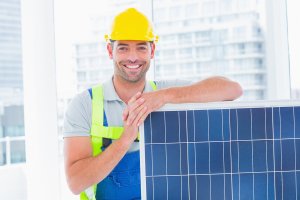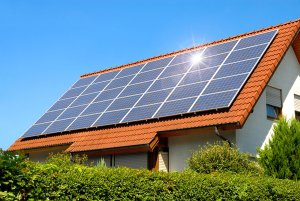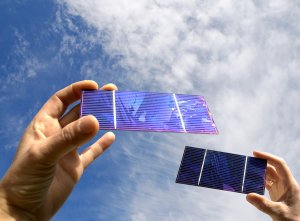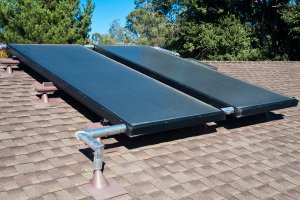-
How to Choose a Solar Company
If you are considering adding solar panels or a water heater to your home, you may be wondering what to look for in a solar company near Leesburg or North Central Florida. Finding the right company for your needs is the best way to ensure exceptional service and a quality solar system installation.

When choosing a solar power company, you should look for establishments that have a long history of providing homes and businesses in the area with excellent service and consistent quality. The ideal solar energy company will use only the most technologically advanced and energy-efficient products for collecting and converting solar power.
Before selecting a solar company, ask about any quality guarantees and system performance assurances that they offer. Find out what financing options are available, and if any supplied quotes are firm or merely an estimation. Finally, ask how much energy a system is likely to produce for your home, and how much it could potentially save you on energy costs.
-
Shining a Light on Sun Bandit [Infographic]
Using a hot water heater requires a significant amount of energy, which is costly for the environment and for you. Solar energy offers an alternative way to heat water without the environmental impact and energy costs, and now there is a new way to harness solar energy for hot water heating: Sun Bandit. The Sun Bandit system harnesses the sun’s energy for solar water heating that is completely off the grid. You can use it in conjunction with your existing hot water heater to preheat your water and reduce the amount of work your heater has to do, or you can convert to Sun Bandit completely and use it for all of your solar hot water needs. Learn more about Sun Bandit in this infographic from Solar Lights & More. We offer a variety of solutions for solar power in The Villages and Ocala, FL. Please share this information to help others understand the energy-saving potential of Sun Bandit solar water heating.
![Shining a Light on Sun Bandit [Infographic]](https://www.solarlightsandmore.com/wp-content/uploads/2020/08/sun-bandit-infographic.jpg)
-
Home Solar Panels 101
Solar panel systems capture the sun’s energy and convert it into electricity. If you’re thinking about installing solar panels for your home near The Villages or North Central Florida, there are a few helpful facts that can help you determine if solar power is right for you. Contrary to popular belief, solar energy can be harnessed to power your household nearly anywhere in the United States, and solar panels can be installed on your roof or the ground near your home.

Home solar panels create an eco-friendly and inexhaustible source of energy due to their ability to convert sunlight into power. During the day, solar cells inside of the panels absorb the sun’s energy as they are exposed to the light. Inside of the cells are circuits which convert the collected energy into direct current electricity. Finally, because most homes run on an alternating current, the direct current is sent through an inverter which transforms the power to an alternating current. At this point, your house can be powered by the electricity created from the collected solar energy.
-
Looking Back at the History of Solar Power
If you’ve heard about the benefits of solar power near The Villages and North Central Florida, you may be interested in learning that the use of solar energy is not a new concept. In fact, people have been harnessing the sun’s power for centuries.
Solar Ovens
Solar-powered ovens rely on the sun’s heat to warm foods and drinks. The first known use of solar ovens occurred in 1767. The invention of a Swiss physicist by the name of Horace de Saussure, these solar ovens consisted of an insulated box fitted with three layers of glass that were used to collect and trap heat. Today, solar ovens are popular in locations where electricity is difficult to access, and are powered by sunlight alone.

Solar Electricity
In the year 1873, Willoughby Smith, an English engineer, discovered that selenium, a chemical element, demonstrated photoconductivity (increased electrical conductivity in the presence of light) while in its solid form. Three years later, Professor William Grylls Adams and his student Richard Evans Day were the first to see an electrical current move through a material that was exposed to light after they attached electrodes to a plate of selenium.
Solar Radiation
Although it is one of his lesser-known achievements, Albert Einstein was awarded the Nobel Prize for his formulation of the photon theory of light. Developed in 1905, the theory describes how the photons contained in solar radiation can transfer their energy on a metal surface.
Solar Cells
Also referred to as photovoltaic cells, solar cells are devices which convert solar radiation into electricity. The first designs for solar cells were created by the American inventor Charles Fritts in 1883. However, it was three researchers from Bell Labs by the names of Calvin Fuller, Gerald Pearson, and David Chaplin who are credited with the creation of the world’s first solar cells in 1954. Over the following years, they managed to improve their device’s conversion efficiency from 4% to 11%. Their first successful trial using the cells in solar panels occurred in 1955, and Bell Labs later supplied solar power for one of NASA’s Vanguard satellites in 1958.
-
Understanding How a Solar Water Heater Works
Are you interested in harnessing solar energy to power your home? A solar hot water system near Clermont and North Central Florida can prove to be a cost-effective and energy-efficient method of providing your household with hot water. This type of system is fueled by solar power alone and can be used in any climate.

Active Solar Water Heaters
A solar water heating system consists of solar collectors and storage tanks. These heating systems fall into two categories: active and passive. Active systems utilize circulating pumps and controls, and can be either direct or indirect. Direct circulation systems function best in climates that rarely reach freezing temperatures, and their pumps circulate water into the home through the collectors. Indirect circulation systems are a popular choice in colder regions that tend to reach freezing temperatures. These systems heat the water flowing into the home using a non-freezing heat-transfer fluid.
Passive Solar Water Heaters
Often less costly but also less efficient than active systems, passive solar water heaters do not use circulating pumps and rely upon one of two other systems instead. Integral collector-storage passive systems are best suited for areas that do not freeze. The second option, thermosiphon systems, are typically more expensive and reliable. These heaters depend on the rising of hot water to the top of the storage tank so it can be pumped into the home.
Solar Water Heater Collectors
The collector’s role is to absorb the sun’s energy that is to be transferred to the water. The three types of collectors used residentially include flat-plate, integral, and evacuated-tube. Flat-plate collectors are weatherproofed and insulated boxes that use a dark absorber plate. Integral collector systems feature black tubes or tanks within an insulated box. Cold water passes through the collector, is heated, and is then pumped into the backup water heater. Evacuated-tube solar collectors consist of clear, glass tubes which contain a metal absorber tube. Attached to the metal is a fin whose coating absorbs the solar energy to transfer heat to the water.
RECENT POSTS
categories
- Uncategorized
- Solar
- Pool Heating
- Solar Pool Heaters
- Solar Panel
- Solar Attic Fans
- Solar Tubular Sky Lights
- About Us
- Infographic
- Solar Cells
- Solar Water Heater
- Tax Benefits
- Solar Powered Lights
- Solar Tubes
- Solar Power
- Solar Company
- Hot Water System
- Sun Bandit
- Solar Energy System
- Solar Electric Power
- Skylight Installation
- PV Systems
- Solar Pool
- Solar Attic Fan
- Solar Fan
